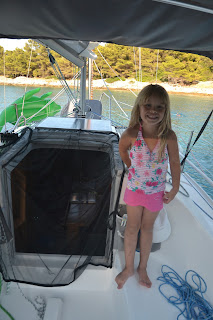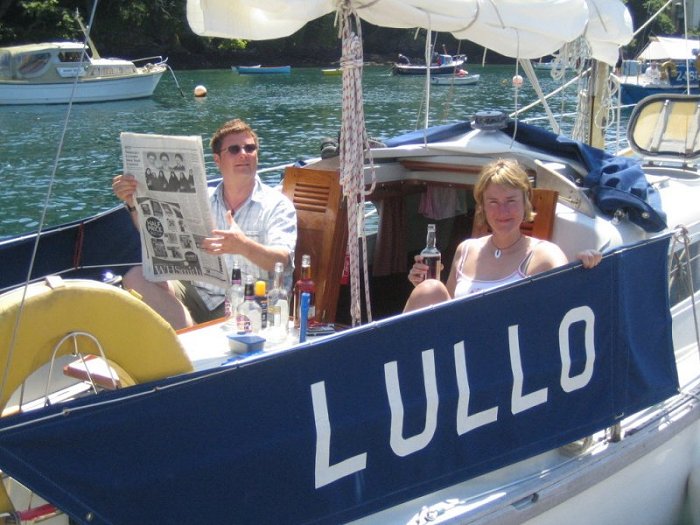Anyway let's do another project this spring, so I would like to start with an additional cabin porthole.
When we are cooking there is still lack of fresh air or too much steam in the cabin, so we have decided to add the same round porthole above the countertop as we have in the head.
Last summer, we had a great trip to the land of Phobos origin - Masurian lakes in the northeast of the Poland. I owe you a report on this topic in the future.
There are tons of marine accessories shops, so it was very easy to find the same porthole as we have made by Craftsman marine. That salesman literally just looked over his shoulder and handed me the right porthole I wanted. I love when the shop is full of so much useful stuff you would buy everything :-)
So let's start. Measure twice - cut once. I've tried to copy the same position as on the opposite side.
 |
| Draw the cut hole |
Then drill a hole for a jigsaw inside and slowly cut the hole.
 |
| Cutting the hole with a jigsaw |
You can see the two layers - one thick outer cabin and thin inner layer.
 |
| Porthole opening |
Then I've put a thickened resin between the layers to seal the opening and prevent the possible water ingress, but also prevent the compression of both layers together during the window installation.
Last thing was just to put a small beat of Sikaflex outside, insert the porthole and screw the inner frame.
 |
| Opened porthole |
 |
| Outside view |
Simple and fast project with big impact. Others next time.

















































